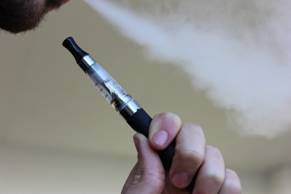Archives
E-Cigarettes: Teens 'Should Not be Using Them at All'
 Often used as an alternative to traditional cigarettes, e-cigarettes are battery-powered devices that frequently contain nicotine solutions. Although many adults use these devices for smoking cessation purposes, “researchers have raised concerns that teenagers may be using them as a gateway into this very habit.” Use of e-cigarettes is prevalent among teenagers, despite the fact that they are banned for sale to individuals under the age of 18.
Often used as an alternative to traditional cigarettes, e-cigarettes are battery-powered devices that frequently contain nicotine solutions. Although many adults use these devices for smoking cessation purposes, “researchers have raised concerns that teenagers may be using them as a gateway into this very habit.” Use of e-cigarettes is prevalent among teenagers, despite the fact that they are banned for sale to individuals under the age of 18.
A recent research study published in Pediatrics, the official journal of the American Academy of Pediatrics, has revealed far more serious outcomes associated with use of e-cigarettes than nicotine addiction and the possible transition to cigarettes.
Dr. Mark L. Rubinstein, the lead study author, and his team at the University of California, San Francisco discovered that teenagers known to "vape" could in fact “be exposing themselves to dangerous chemicals that have been linked to cancer.” It is critical that teenagers are informed that toxic substances are contained in both e-cigarettes and in traditional ones, and even nicotine-free devices may still be harmful.
“Teenagers need to be warned that the vapor produced by e-cigarettes is not harmless water vapor, but actually contains some of the same toxic chemicals found in smoke from traditional cigarettes. Teenagers should be inhaling air, not products with toxins in them,” said Dr. Rubinstein.
The researchers collected and analyzed 104 adolescents’ urine samples, 67 of who used e-cigarettes and 17 of who used both e-cigarettes and traditional cigarettes. The other twenty teenagers neither smoked nor vaped. Based on their study, Dr. Rubinstein and his team determined that teenagers who used e-cigarettes “had a three times higher concentration of toxic compounds in their bodies than their non-vaping peers.”
Rubinstein’s study was the first of its kind to test for harmful carcinogenic substances including chemicals such as “acrylonitrile, acrolein, propylene oxide, acrylamide, and crotonaldehyde,” among teenagers who use e-cigarettes. Each one of these toxins have been labeled as either carcinogenic or potentially carcinogenic to humans.
Researchers also discovered that some of the substances that were discovered in the bodies of adolescents using “flavored, nicotine-free e-cigarette liquid,” such as propylene glycol and glycerol, have been shown to create carcinogenic compounds if they are heated.
"When they're heated to the high temperatures required for vaporization, they can produce toxic substances that are potentially carcinogenic," said Dr. Rubinstein.




